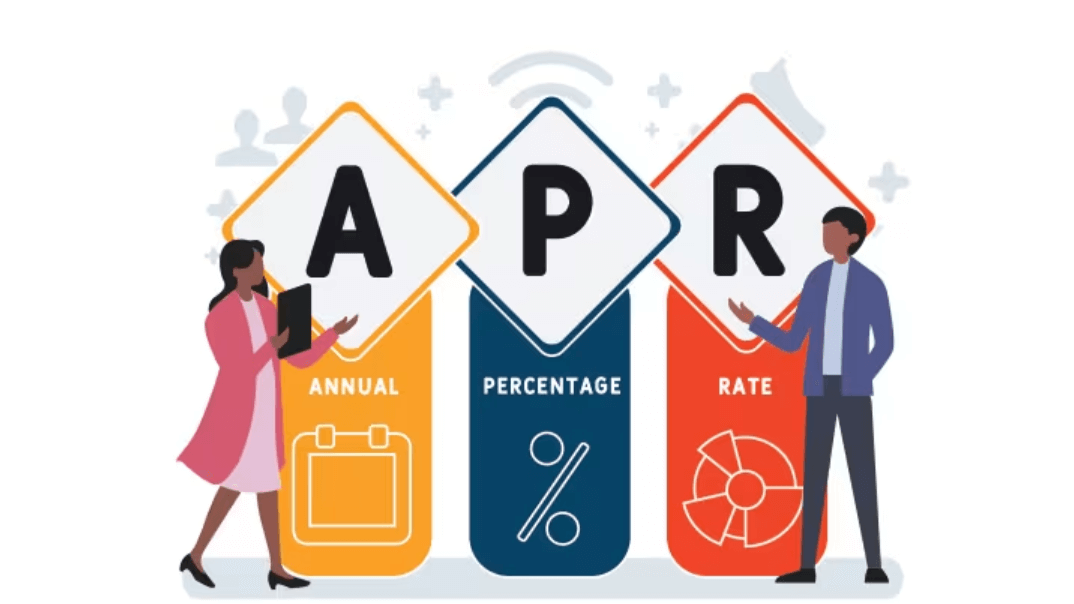When managing your finances and using credit cards, understanding the Annual Percentage Rate (APR) is crucial. In this comprehensive guide, we will explore what is APR for credit card, how it affects your usage, and how you can make it work in your favor.
Introduction what is apr for credit card
APR is an acronym that stands for Annual Percentage Rate. It is a term commonly associated with credit cards, loans, and mortgages. In the context of credit cards, APR represents the cost of borrowing money over the course of a year. In simpler terms, it’s the interest rate you pay on any outstanding balance on your credit card.
What Does APR Stand For?
APR, as mentioned, stands for Annual Percentage Rate. It is a standardized way of expressing the cost of borrowing money. The APR on your credit card may vary, and it’s essential to know how it’s calculated.
Types of APR
There are two primary types of APR associated with credit cards:
Fixed APR
A fixed APR remains constant throughout the year. It provides stability and predictability, making it easier for cardholders to budget and plan their payments.
Variable APR
A variable APR can change over time, often in response to market interest rates. This means your credit card’s interest rate can fluctuate, making it important to stay updated on any rate changes.
How Is APR Calculated?
The method used to calculate APR can significantly impact the amount you pay. Common methods include:
Daily Balance Method
This method calculates interest based on the balance at the end of each day. It can result in lower interest charges for those who pay their bills promptly.
Average Daily Balance Method
This method computes interest based on the average balance over a billing cycle. It can be less favorable for those who carry a balance from month to month.
Adjusted Balance Method
This approach takes the balance at the beginning of the billing cycle and subtracts any payments or credits you’ve made. This may result in lower interest charges for some cardholders.
Why APR Matters
Understanding and managing your credit card’s APR is crucial for several reasons:
Impact on Credit Card Balances
APR directly affects how quickly your credit card balance can grow. A high APR means more interest, making it harder to pay off your credit card debt.
Factors Affecting Your APR
Several factors can influence your credit card’s APR, including:
Credit Score
A higher credit score often leads to a lower APR, as lenders view you as a more responsible borrower.
Market Conditions
Market interest rates can impact variable APRs. When rates rise, so does your credit card’s interest rate.
How to Find Your Credit Card’s APR
Locating your credit card’s APR is easy. It’s typically disclosed on your monthly statement or in the credit card agreement.
APR vs. Interest Rate
It’s important to note that APR and interest rate are not the same. The interest rate is the cost of borrowing, while APR includes additional fees and charges.
How to Manage and Lower Your APR
Managing and lowering your APR is possible through responsible financial habits and negotiations with your credit card issuer.
The APR on Promotional Offers
Credit card companies often offer promotional APRs for balance transfers or new purchases. Understanding the terms and conditions of these offers is crucial.
The Legal Aspects of APR
Laws and regulations govern how credit card companies can determine and change your APR. Knowing your rights is essential.
Understanding the Importance of Minimum Payments
Paying only the minimum amount due can lead to higher interest charges and prolonged debt. We’ll discuss how to avoid this pitfall. Read more…
Tips for Using Credit Cards Wisely
We’ll provide practical tips on using credit cards wisely to minimize the impact of APR on your finances.
Conclusion
In conclusion, what is apr for credit card that is a vital aspect of your financial life. By understanding how it works and taking steps to manage it effectively, you can make the most of your credit cards while minimizing financial burdens.
FAQs
- What is a good APR for a credit card?
- A good APR for a credit card is typically below 15%. However, the best APR for you depends on your financial situation and credit score.
- Can I negotiate my credit card’s APR?
- Yes, you can. Contact your credit card issuer and inquire about the possibility of lowering your APR, especially if you have a good payment history.
- What’s the difference between a purchase APR and a cash advance APR?
- A purchase APR applies to regular credit card purchases, while a cash advance APR is the interest rate for cash withdrawals. Cash advance APRs are often higher.
- How can I improve my credit score to get a lower APR?
- To improve your credit score, focus on paying bills on time, reducing credit card balances, and managing your credit responsibly.
- Is there a way to avoid paying APR on a credit card?
- You can avoid APR charges if you pay your credit card balance in full by the due date each month. This is known as the grace period.











